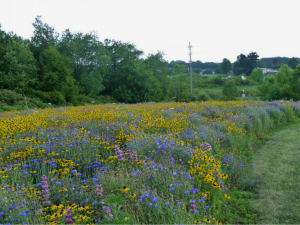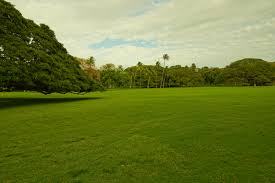 |
 |
In which picture is there more airborne pollen? Yes, this is a trick question. I have been reading comments on my post from a couple weeks ago about lawn versus prairie and several people have noted that allergies might prevent some from planting prairie.
Here are the facts and you cannot trust antihistamine commercials to be accurate (after all, they are trying to sell a product). Colorful flowers use their color to attract myriad species of pollinators – bees, butterflies, moths, flies, birds, and others. As these pollinators sip nectar they transfer pollen from anther to stamen from one plant to another thus fertilizing them. Given that this is their reproduction strategy, the pollen is typically too heavy, sticky, or both to become airborne. Therefore, flowers with color do not contribute to allergies because their pollen almost never becomes airborne.
So, where does airborne pollen come from? It comes from flowers that have little to no color – trees, grasses, and weeds like Ragweed. These flowers are often some shade of green and are not attractive to pollinators. Thus, they must emit vast amounts of light pollen so a grain or two here and there will reach the flower of another plant or tree and fertilize it. These are the pollens that cause seasonal allergies.
Myth: Goldenrods in the fall cause hay fever. This is false for the reasoning above. It is Ragweed that blooms at the same time and has green flowers that causes hay fever.


